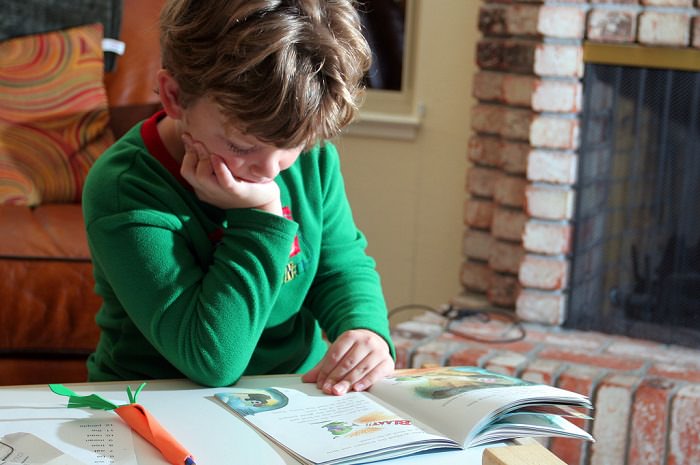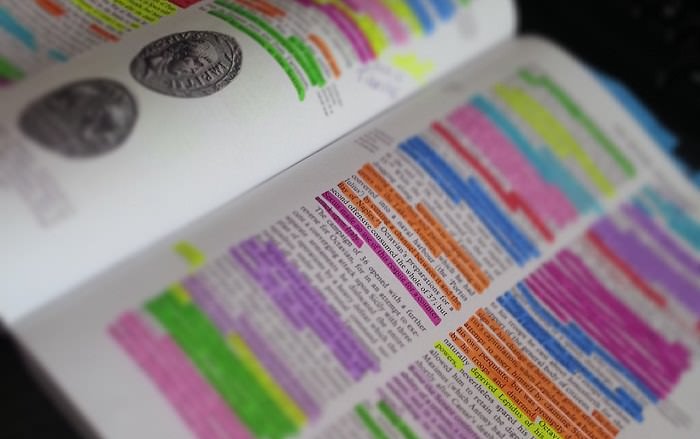
The education system gives our children a variety of very important tools: It teaches them to read and write, to solve problems and to learn all about important events that have taken place throughout history. However, our kids don’t always know how they can use these tools properly, leading to frustration, negative attitudes toward school, incorrect learning processes, and, ultimately, worse grades. Therefore, the best gift we can give them in such a situation is the skill of how to learn, and not just what to learn. This important knowledge will enable our children to be skilled in dealing with challenges, problem-solving and correct time management when faced with tasks. The following 10 tips will help you give your children some of the most important tools that will accompany them in their everyday life, before tests, and in the future in general.
Most of us don’t remember the name of the last book we read, even if we read it only a few weeks ago, and the reason for this is the wrong way in which we learned to approach the texts we read at an early age. Schools teach our children to go directly to a chapter or page they need to read, but this way of reading "sterilizes" the text from any context, and makes them relate to each task as a unit in itself and not as part of a larger topic.
Teach your children to examine the cover of the book: read the information on the back of the book, delve into the title and go over the table of contents to understand what is in store for them. Next, after reading the title of the chapter itself, ask them what they can learn from it, what it implies and what they think will be discussed in the chapter. Finally, make sure that they know and understand the benefits of all the parts of textbooks which include: more in-depth extenuations at the end of the chapter, information boxes on the sides of the pages, etc. Only in the final stage, encourage them to read the entire text.
Our children learn to read the material in front of them in just one way: an in-depth reading from start to finish. However, often the length of the chapters and the information presented in them leads to boredom, distractions, forgetting details and ultimately not understanding the subject. We, as adults, read important and complicated texts more than once to fully understand them, so why should we expect our kids to do it differently?
Suggest that your children read the texts in one of two ways: Some will prefer to first skim through all the sub-headings in the chapter, if the text is particularly long, and then read it again in depth. Others, on the other hand, prefer to read the chapter in-depth reading while creating and marking sub-topics or important points, and in the second reading, only skimming over the ideas they deem important. Allow children to experiment with several different types of texts so that at the end of the reading they will know the main idea that came up in the chapter they read.
Many teachers teach children to avoid skimming over texts to be sure they've read the whole thing thoroughly, but in many cases, throughout our lives, we can’t read whole texts and we may be frustrated when we can’t finish a long text in a short time. Teaching your children to skim effectively, as an addition to the deep reading and not as a substitute for it, is an important tool that they must know which can help them later on.
Ask the child to read a particularly long chapter in fifteen minutes. Let the child know when they have 5 minutes left, and let them deal with the time management on their own. At the end of the exercise, talk to the child about the solutions to the problem. Suggest that they start each text by looking at the number of pages to be read, so that they can plan their time properly, and skim if necessary. Another thing to look out for is highlighted or bolded text, as these often point out main ideas.
Each of us prefers to take notes differently, and for children, there are several ways to effectively take notes, which don’t have to look like a summary. The main ones are:

As already noted, traditional methods of learning make it very easy for children to forget that everything they learn is often part of a larger idea. Encourage your children to identify the context of the text, even if it’s an article in its own right, to guess what may happen in the next chapter or lesson, and to apply what is learned in school outside school hours. Make every trip to the supermarket a place where you can practice math, teach your children to find countries that are taught in a history lesson on a map, and so on.
Since school exams are usually held once every few months, children often "reconnect" with certain topics long after they were read for the first time. Instead of spending a lot of time trying to remember how what they read will fit into the exam, get them used to finishing every chapter read by asking and writing down a few questions they think they might be asked later. In this way, they are they can prepare for the test by reading the notes that were taken during the first reading, and then answering the questions they themselves formulated. 
Teach your children to always hold a pen or pencil while reading, and mark or highlight new terms, complicated subjects, or difficult to understand words. Take a few minutes every day to answer the questions your children might have had on different subjects throughout the day. In this way, even if the child didn’t understand something during the lesson, but didn’t have the time or forgot to ask about it, they could talk to you about it at home and not turn a small question into a gap in knowledge that will increase with time.
We often spend a lot of time doing a certain task incorrectly just because we decided not to read the instructions. This is a particularly harmful habit that children get used to already in school, either because of time constraints or because they are sure they know what to do. However, it’s not often the desire to save time that results in doing an entire task incorrectly. Get involved by helping them read the instructions while they do their homework. Make sure they understand them before letting them go on to the task. If they are given long or complicated instructions, encourage your child to circle or underline keywords (such as "create," "find," "add," etc.).
We all know that the environment in which our children do their homework has a significant impact on their concentration, and there are quite a few things that can be done to help them improve their learning experience. Make sure their work environment is clean and free from distractions. Furthermore, make sure they have a comfortable chair and are sitting correctly at their desk.
Once you know these important key rules and just before you actually implement them, ask your child how they would overcome their own learning challenges: what they think is the biggest difficulty that hinders them from solving the exercise and why they think they can’t finish reading texts. Continue by asking them if they are able to do these assignments in the classroom, and if so how, what learning methods do they see other children use, and other questions, just be careful not to overdo it.
These questions are supposed to come not as a critique of a child’s behavior, rather out of assessment of their maturity and abilities. In addition to the fact that such a relationship will teach the child to be more independent and not always wait for your help, it is very possible that they’ll be able to come up with interesting and creative solutions that can be combined with all the other ideas we’ve listed here.